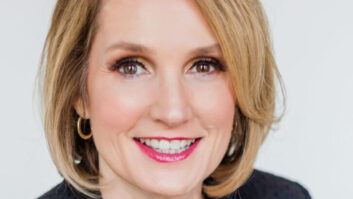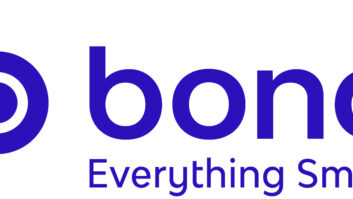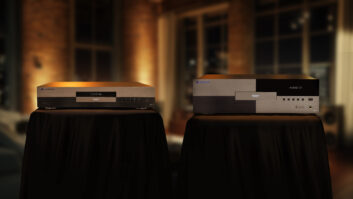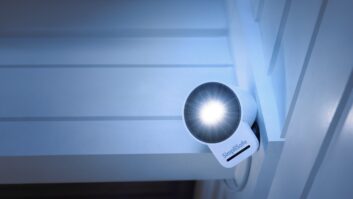MINNEAPOLIS – Best Buy continued to press ahead with its “Renew Blue” turnaround plan last quarter, which helped offset soft sales to put the company back in the black.
Indeed, ongoing cost cuts, supply-chain efficiencies and other operational improvements under president/ CEO Hubert Joly’s reinvigoration strategy helped deliver a $461 million profit for the three months ended May 3, compared with a year-ago loss of $81 million.
The gains came despite a 3.3 percent decline in net sales, to $9 billion, and 1.9 percent drop in total comp sales, which the company attributed to a weak CE climate and a dearth of captivating new products, particularly in mobile.
Nevertheless, citing NPD Group data, Joly said Best Buy still managed to outperform the CE industry and gain share in the U.S. market thanks to improved price competitiveness and “an enhanced customer experience focused on advice, service and convenience.”
On an earnings call, Joly ticked off a litany of initiatives that are driving the shopping enhancements, including the rollouts of Samsung and Sony home theater shops to hundreds of stores in what is the department’s first major merchandising overhaul in nearly a decade.
Best Buy is similarly adding another 20 Magnolia Design Center premium home-theater departments this year and up to 50 more Pacific Kitchen & Home luxury appliance sections, he said.
The chain also reorganized its retail staffing structure by consolidating its field force around key markets using localized strategies, and reduced the number of management-level positions in stores.
Online, the company has increased its customer product reviews by 20 percent from last quarter, is shifting from TV ads to more targeted digital marketing via a new customer database dubbed “Athena,” and continues to enhance the website with holiday gift centers.
The retailer has also brought its ship-from-store capability chain-wide, allowing online customers to find and purchase clearance, open-box and eventually returned inventory from any Best Buy location while affording the company better margins on the end-of-life merchandise. Using the stores as distribution points has also decreased the number of online out-of-stocks and reduced ship times for orders.
Together those initiatives drove a 29.2 percent increase in U.S. e-commerce sales last quarter, he said, to $639 million.
Still on Joly’s online to-do list between now and the holidays is an improved homepage design; a more robust and streamlined customer “wish list”; richer visual and editorial content; customer access to their Geek Squad service plan purchases; and enhanced search and navigation capabilities.
Elsewhere, the company has become the first national chain to begin selling the new unsubsidized mobile phone plans from multiple carriers, and is revamping its Geek Squad services business under division chief Chris Askew to lower costs, raise customer awareness and satisfaction, and provide new offerings as technology evolves.
Sharon McCollam, Best Buy’s acclaimed chief administrative officer and chief financial officer, added that the chain is also investing and progressing in strategic pricing, “so as we come into Q4, I believe that you will see a greater level of sophistication in both pricing and promotions.”
Perhaps contributing most to the bottom line, the company cut an additional $95 million in annualized costs for a total of $860 million in annualized savings, while raising the goal to $1 billion.
“While we remain mindful of the fact that we still have a lot to do in our Renew Blue transformation, the first-quarter results clearly demonstrated the progress we are making towards improving our operational performance, building foundational capabilities and leveraging our unique assets to create a differentiated value proposition,” Joly told investors.
Retail analyst David Strasser with Janney Montgomery Scott seemed to agree, writing in a research note that “the first-quarter results highlighted that the management team appears to be set and operating at a pretty high level.”
Nevertheless, U.S. net sales fell 2.1 percent to $7.8 billion during the quarter, and comps decreased 1.3 percent. Broken out by category, CE comps fell 4.1 percent on declines in home theater, with CE now representing 29 percent of Best Buy’s domestic sales mix, down from 30 percent last year.
The computing and mobile phone business, which comprises nearly half of the chain’s revenues, was essentially flat for the quarter, as declines in tablets offset gains in computing.
Majap comps rose 9.1 percent, although white goods’ share of revenue remained flat at 7 percent, and comps for the entertainment segment edged up 1.5 percent on strength in gaming.
Comps for services, which include service contracts, extended warranties, product repair, computer services, and delivery and installation, fell 13.5 percent.
U.S. gross profit slipped 70 basis points to 22.7 percent, reflecting higher mobile warranty costs; investments in price competitiveness, particularly in accessories; and less favorable terms of a new credit card agreement.
The decline was partially offset by $161 million in quarterly cost reductions, more effectively managed promotions, and tighter expense management throughout the company.













